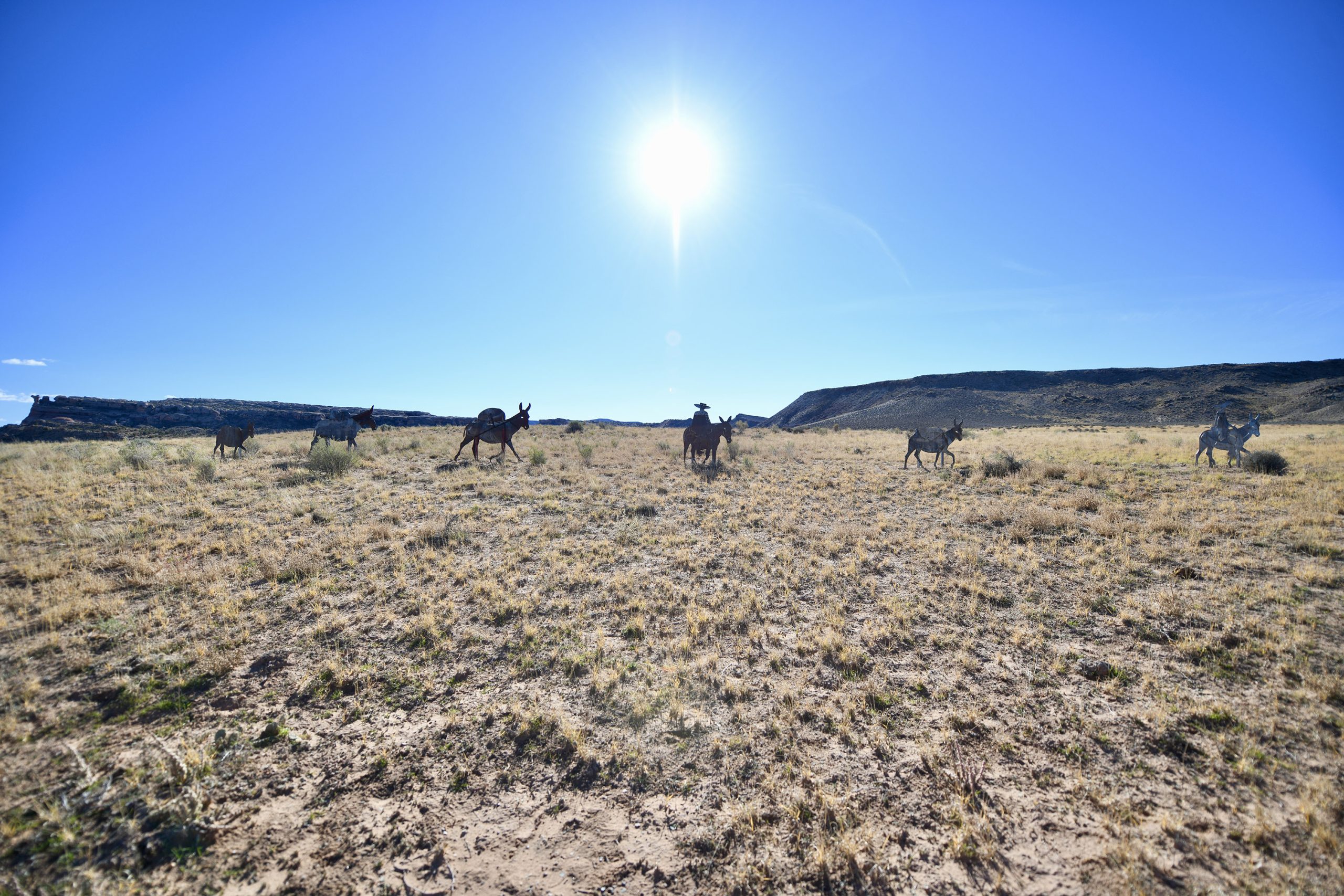Some information may be outdated.
In the opinion of the Canyonlands chapter of the Backcountry Horsemen, the reason Moab was originally founded is because of a geographic oddity: the Moab fault, which created an accessible path across the Colorado river. There are few places to cross the river without having to navigate the canyons that surround it, and Moab now sits on one of them. This path became known as the Old Spanish Trail, the “longest, most arduous, and crookedest pack mule route in America” (Hafen and Hafen, 1993), first blazed by cowboys in 1829.
Today, the trail itself is hardly used for the purpose it was created for. Who needs a pack trail stretching from Los Angeles to Santa Fe, when you could just hop on a plane? But it is visited, especially by a devoted few, namely, the Canyonlands chapter of the Backcountry Horsemen.
Last month, the chapter partnered with the Bureau of Land Management to install six metal sculptures depicting the silhouettes of cowboys and mules at the Courthouse Rock campground near a stretch of the Old Spanish Trail. The sculpture project is meant to capture the heritage of the trail and bring awareness to it, especially considering how crucial it was in developing Moab.
“We have a lot of people in our group who are interested in history,” said Stephen Schultz, president of the chapter. “We’ve seen throughout the state that other chapters at other locations have put up these metal silhouettes … and we wanted to be a part of that.”
The Backcountry Horsemen is a national organization “committed to protecting the access of equestrians to public lands,” according to its website (bcha.org). There are over 200 chapters nationwide—the Canyonlands chapter formed in the 90’s, Schultz said. The organization is committed to working with land managers to preserve existing trails and to “commiserate with our heritage,” Schultz said.
Schultz said the Backcountry Horsemen have been called “one of the greatest unknown volunteer groups in the American West.”
“What’s amazing about these people is that a lot of them are retirees—so what you have is people who have 20, 30, 40 years of experience with horses and riding stock. They own the animals, they feed them, they house them. They have their own trucks, their own pastures, barns, hay. They have all their own tools,” Schultz said. “And these people go out at their own cost to volunteer their time … they’re an amazing group of people.”
The chapter’s numbers are dwindling, Schultz said. It used to be much easier to buy horses and to buy the infrastructure needed to support a trail equestrian lifestyle, but now all of those tools, pastures, barns, are so much more expensive.
“We’re seeing fewer and fewer young people interested in it,” Schultz said. The work is difficult—the group regularly does trail clearing, which requires people to work at high altitudes with chainsaws to move trees off of trails. It’s a “real noble thing to do,” he said.
“Where do you find somebody with 40 years experience who pays for their own food, for all their fuel, who comes to you for free? Where do you find people like that?,” Schultz said. “That’s unheard of anywhere else.”
Congress designated the Old Spanish Trail as a National Heritage Trail (the 15th in the country) in 2002. In 2018, the BLM and the National Park Service began developing a “recreation and development strategy,” in partnership with Grand County, the Moab Museum, Arches National Park, the Old Spanish Trail Association, and the Backcountry Horsemen.
The hope is to “bring the Old Spanish National Historic Trail to life in Grand County so that it becomes a valuable educational and recreational asset for residents and visitors alike,” according to the strategy document. The objectives are to install more trailhead and roadside signs explaining the history of the trail—the pack mule sculpture project by the Backcountry Horsemen was developed alongside this overarching plan.
Schultz said his chapter decided on Courthouse Rock Campground as their location because it is historically a famous and well-documented camping spot, and is currently a popular recreation zone with pre-existing horse infrastructure. Schultz worked closely with Rob Sweeten, the Old Spanish Trail administrator/Utah Historic Trails lead at the BLM Utah State office to develop the sculpture project and secure funding and permits.
The BLM is also working on adding an interpretive panel at the site of the sculptures explaining its historical significance.
Appreciate the coverage? Help keep local news alive.
Chip in to support the Moab Sun News.





